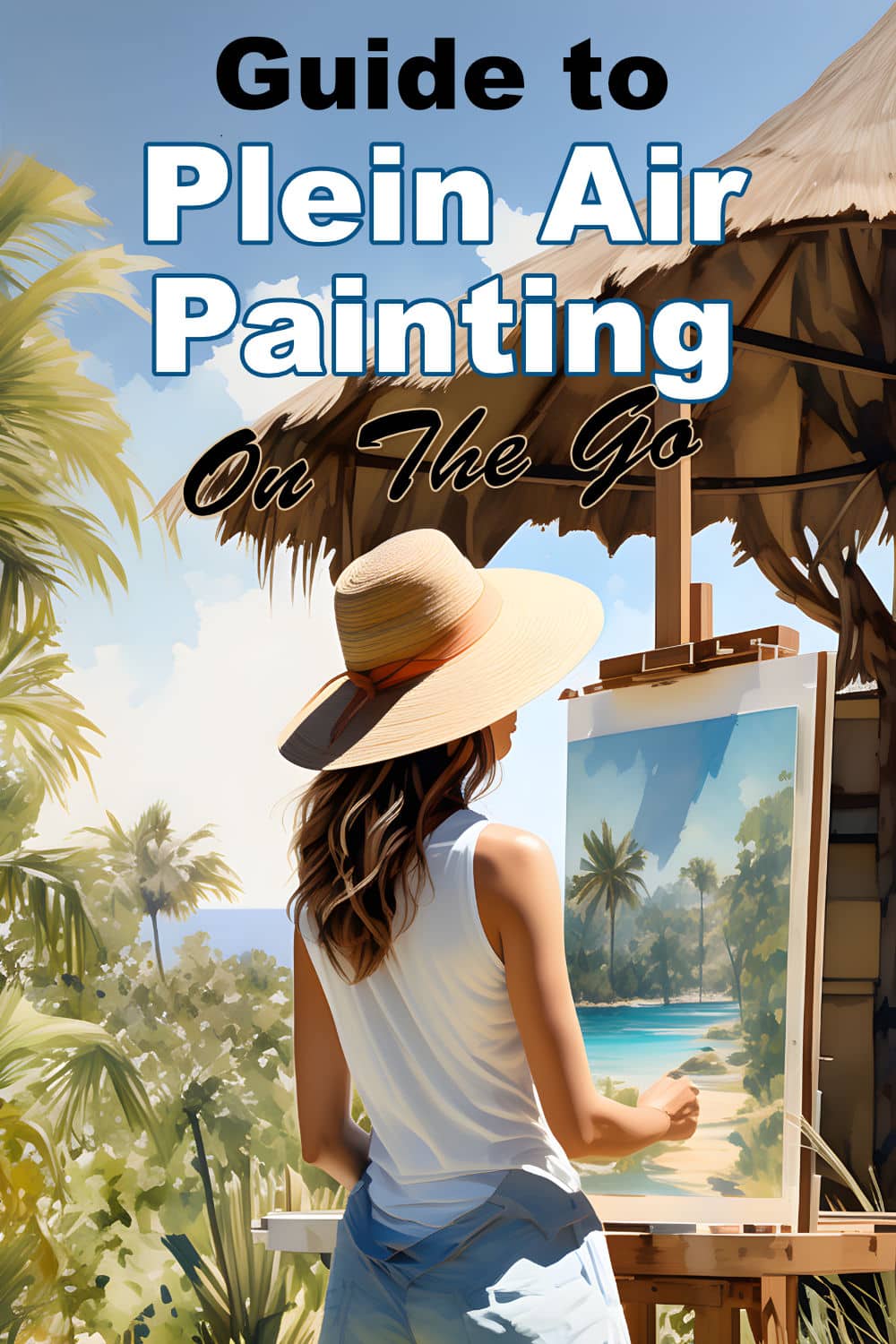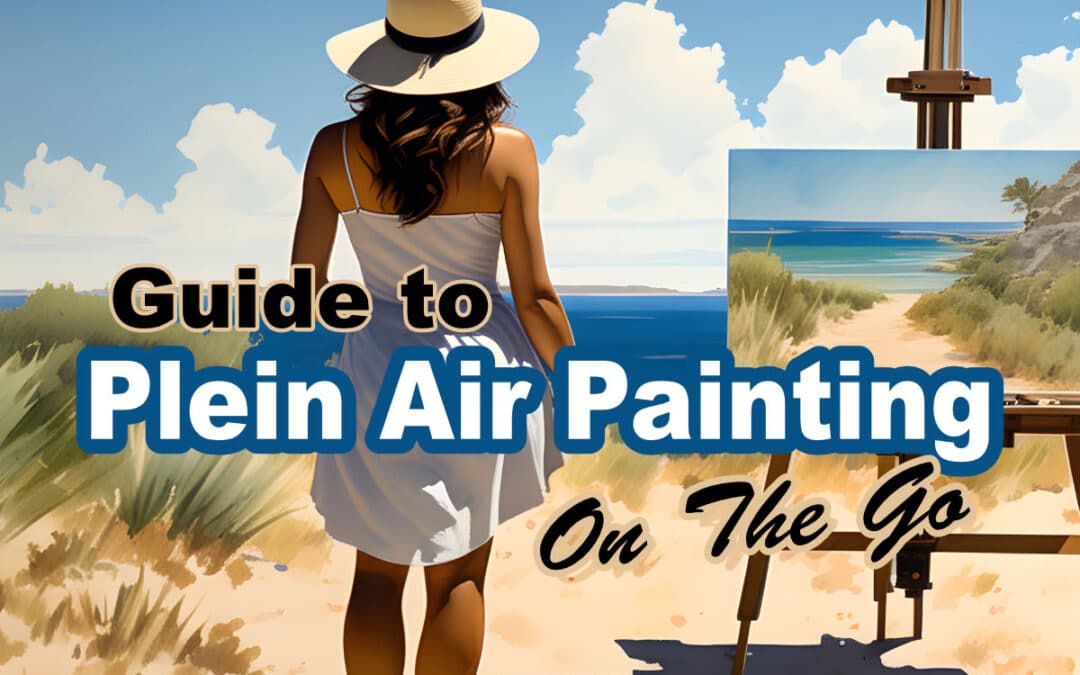Your Guide to Painting on the Go
Whether you’re a budding artist looking to sketch your first sunset en plein air or a seasoned painter in search of new inspiration, this travel painting guide is your trusty companion for all things related to painting while traveling.
Here, we’ll unpack the essentials of preparing your portable art supplies for travel, focusing on practical, lightweight choices that won’t break your back or the bank. You’ll discover plenty of tips for painting while traveling and how to make the most of your painting sessions, whether perched on a city rooftop or nestled in a mountain nook.
We’ll guide you through the ins and outs of sketching and painting on vacation, from seeking out those hidden, picturesque spots to understanding how different lights and shadows can transform your work. Plus, we’ll talk about the softer side of travel painting, like connecting with local cultures and how these interactions can breathe life into your artwork. Of course there are plenty of Plein air painting tips waiting for you inside too.
And when your artistic travel adventure ends, we’ll show you how to keep the creative flame burning. Learn how to turn those on-the-spot sketches into refined pieces and keep your travel memories alive through your art long after you’ve returned home.
So, whether you’re sipping coffee by the Seine or trekking through the Amazon, let’s gear up for a journey where each destination becomes a page in your artistic diary. Let “Plein Air Painting” be your guide to combining travel and art by capturing your travel experiences on canvas.
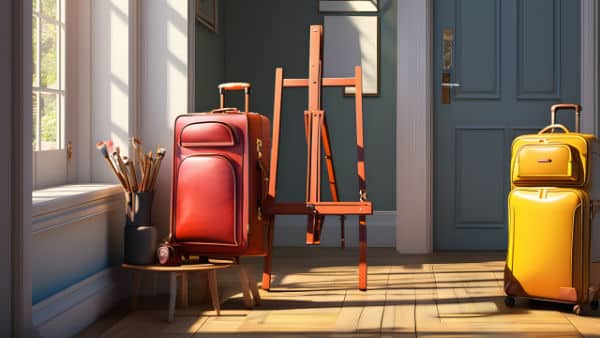
1) Preparing for the Trip
Before you set foot on your next great adventure, let’s talk about art supplies for traveling artists. Preparing for a trip as an artist isn’t just about packing socks and sunscreen; it’s about curating the perfect toolkit that will let your creativity flow, no matter where you are. Think of it as packing a little piece of your studio in your suitcase. We’re going to dive into how to pick art supplies that are as travel-friendly as they are inspiring. From navigating airline regulations to choosing the right sketchbook, this section is all about making sure your art journey starts on the right note. So, let’s get your bags ready with everything you’ll need to capture the world in your unique style!
a) What To Consider When Choosing Your Art Supplies
When it comes to picking your travel art kit, it’s not just about what you’ll use, but also how you’ll carry it. Here are some key things to keep in mind:
Airline Weight Limits: Stay within the limits to avoid extra fees. Light and compact is the way to go.
Luggage Space: Your art kit should easily fit in your luggage or car, so size and portability are key.
Durability of Supplies: Opt for supplies that can handle a bit of a shake and a bump.
Ease of Use: Choose tools that are quick to set up and pack away. You don’t want to miss a moment!
Multi-functionality: The more uses one tool has, the less you need to pack.
Security and Customs Regulations: Be aware of what you can carry on flights, especially liquids like paints. After you have selected your items, check with the airline to ensure they are allowed.
Environmental Considerations: Go for eco-friendly options, especially if you’re painting in nature. Make sure you will leave only footprints when you are done.
Local Availability of Supplies: Sometimes it’s easier, and cheaper, to buy certain items at your destination.
Personal Comfort and Ergonomics: Your painting setup should be practical and efficient. Go on a few test runs locally before you go on holiday to ensure you have everything you need and your system runs smoothly.
Climate and Terrain Adaptability: Make sure your supplies can withstand the climate of your destination. Getting caught in the rain often happens when painting outdoors.
Safety of Supplies in Transit: Pack your supplies securely to avoid any in-transit accidents. Re-usable, resealable plastic bags are your friend here.
Clean-up and Maintenance: Easy-to-clean supplies save time and hassle. Ideally you wouldn’t even need to clean on site, but just close everything up then clean when you get back to base.
When creating art while traveling and you’re miles away from your studio, having the right portable art supplies can be a game-changer. For the traveling artist, time is often of the essence, making the ability to master quick-drying art mediums a valuable skill. Acrylic paints are a fantastic option in this regard; they dry much faster than oil paints, often becoming touch-dry within minutes. Watercolors also dry quickly and are ideal for swift, expressive works. If you’re into sketching, consider using ink or fast-drying pen markers that won’t smudge as you move along.
Experimenting with different mediums can also lead to discovering new techniques and styles that suit your artistic expression. For instance, try using less water with watercolors for quicker drying or work with thin layers of acrylics, which dry faster than thicker applications. Additionally, there are mediums and additives available that can speed up the drying process of paints like oils, should you prefer to stick with traditional materials. Embracing these faster-drying mediums not only keeps your workflow smooth while on the go but also opens up new avenues for creativity.
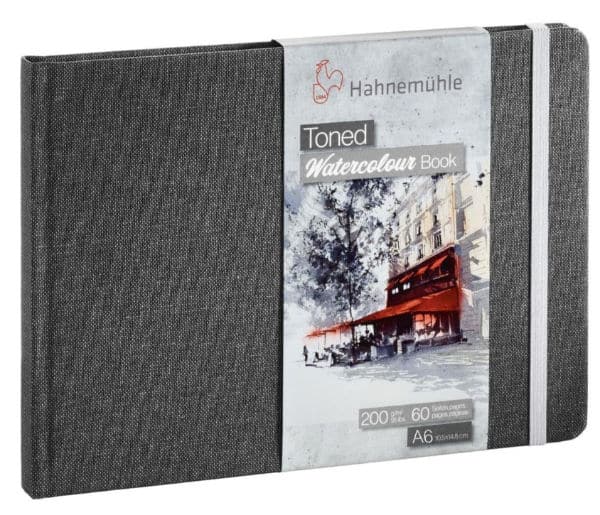
Note: this page contains affiliate links to products on Amazon. If you purchase through the links I will earn a small commission for the sale at no extra cost to you.
b) Essential Plein Air Art Supplies
Here’s a rundown of the essentials to bring along on your artistic travels:
Sketchbook: Sketchbooks work better than canvasses, but a book of canvasses will also work.
You’ll want something sturdy enough to withstand a variety of environments, from a breezy beach to a bustling city street. Look for a sketchbook with a hardcover to provide a stable surface, and water-resistant pages if you’re using wet mediums like watercolors. The paper weight is crucial too; heavier paper (at least 140 lb or 300 gsm) is ideal to prevent buckling and bleed-through. Size matters as well – something not too bulky but with ample space for your art. Spiral-bound sketchbooks can be handy as they lay flat and allow easy removal of pages. Lastly, consider the texture of the paper: smooth for detailed work and rougher for more expressive techniques. Browse a variety of Sketchbooks on Amazon (Affilite link)
Pencils and Erasers: A selection of pencils for sketching, along with a reliable eraser for those inevitable do-overs. You could also use charcoal if you are doing purely sketching with no over painting.
Tombow and Steadler both have new pencil set great for plein air sketching.
Travel Watercolor Set: Compact, easy to carry, and perfect for capturing scenes on the fly. Here is a variety of Watercolor Paint Sets.
Portable Palette: For mixing those perfect shades, no matter where you are.
If you get a watercolor set, it will often have a palette built in so look out for those.
For oil and acrylic painting a small sheet of ABS plastic works great as a palette as they are very light and can be trimmed to fit your carry bag / pochade box.
Brushes: Choose few versatile options. For travel painting, a well-chosen set of brushes can cover all your needs without taking up too much space. A good mix includes a couple of round brushes in small and medium sizes for versatility across watercolors and acrylics, a medium flat brush for broad strokes, a medium filbert for blending and soft strokes, and a liner or rigger brush for fine details. If space allows, add a fan brush for textures like foliage and a small angle brush for precise lines. Opt for synthetic bristles for durability and ease of maintenance, and consider brushes with protective caps or a travel-friendly brush case. This selection will ensure you’re well-equipped for a variety of painting styles and techniques, making your travel art kit both compact and comprehensive. Consider ones with protective caps to keep the bristles safe.
I have found a fabulous starter outdoor painting kit which has everything you need to get started painting outdoors in oil, acrylic and watercolor. All in one kit! I’ll leave a link in the button below for you go check it out:

Water Brush Pen: A brilliant tool for watercolor painting without the need for a water cup.
Ink Pens: Waterproof and fade-proof are best, especially for those detailed line works.
Charcoal or Pastels: If that’s your jam, they can add a different texture and feel to your work.
Acrylic Paint Tubes: Small tubes are travel-friendly if acrylics are your preferred medium. (Remember to check with your airline on size limits and if they need to go into the storage hold during the flight)
Collapsible Easel: A lightweight collapsible easel is an invaluable asset, providing stability and comfort when painting outdoors. These easels are designed for easy transport and quick setup. The most compact of these is a pochade easel – a tiny, all-in-one painting station that often attaches to your tripod. Pochade easels are incredibly efficient, often featuring a built-in palette, slots for transporting wet paintings, and storage for brushes and paints. They’re especially ideal for oil or acrylic painters who need a flat surface for their palette and a secure place for their supplies.
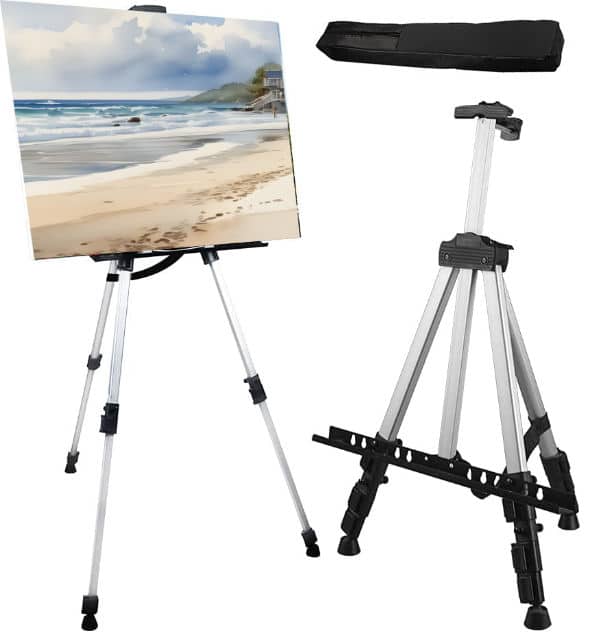
Rags or Paper Towels: Essential for managing spills and cleaning brushes.
Spray Bottle: Handy for keeping your watercolors moist.
Palette Knife: Not just for mixing paint, but also for creating interesting textures. (If flying these must be stored in the hold during the flight)
Sealable Plastic Bags: Great for organizing and protecting your supplies from moisture.
Portable Chair or Stool: If you’re planning on painting for a while, this can be a back-saver.
Camera: Make sure to pack your camera if your phone doesn’t have a good built in one.
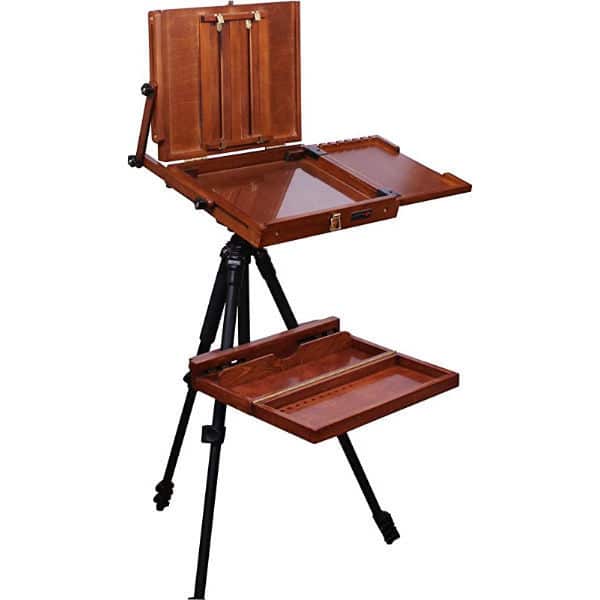
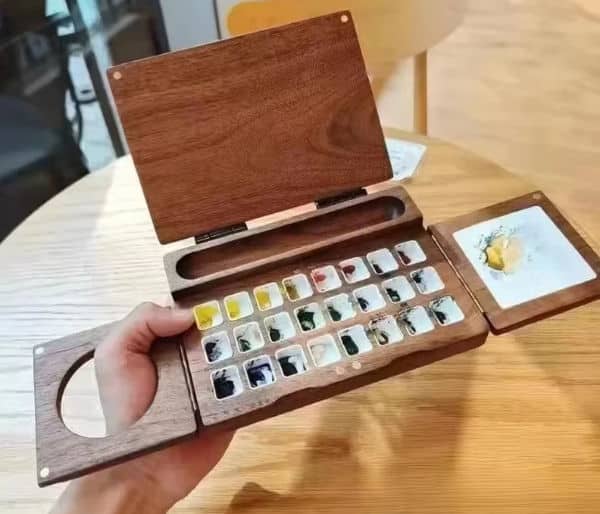
Weather: When preparing for outdoor painting, packing for various weather conditions is key to ensure both your comfort and the protection of your artwork. Here’s a handy list of items to consider:
Waterproof Backpack or Bag: To keep your art supplies dry if you don’t have a pochade easel
Protective Covers: For your easel, canvas, or sketchbook to shield them from rain or direct sunlight.
Umbrella: A portable one, possibly with a clamp to attach to your easel, can provide shade or protection from rain.
Sunscreen and Lip Balm: To protect your skin from sunburn.
Hat and Sunglasses: To shield your eyes and face from the sun.
Lightweight Rain Jacket or Poncho: Compact and easy to carry, ideal for unexpected rain.
Warm Layers: Such as a fleece or sweater, for cooler temperatures.
Gloves: Thin but warm, for painting in colder weather.
Comfortable, Waterproof Footwear: To keep your feet dry and comfortable.
Portable Stool or Chair: One that’s weather-resistant, in case the ground is wet.
Water Bottle: To stay hydrated, especially in warm weather.
Insect Repellent: If you’re painting in a bug-prone area.
Hot or Cold Beverage Flask: Depending on the weather. This is very important to keep you refreshed and hydrated and is a break from the water.
Wet Wipes or Hand Towel: Handy for quick clean-ups or to dry off surfaces.
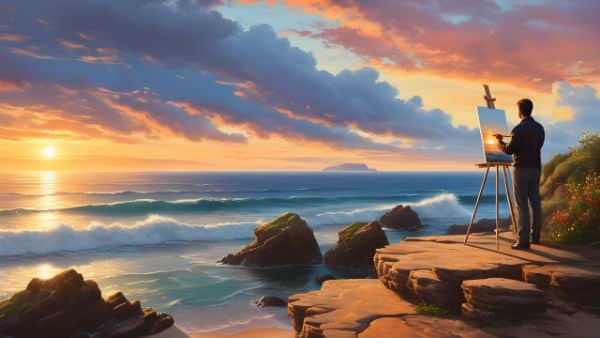
2) Practical Outdoor Painting Tips
I have tried to arrange these tips in the order you will need them so let’s dive in with getting ready to go out for the day’s painting.
a) Adapting to Outdoor Conditions
When painting outdoors, the weather can be as much a part of your canvas as the landscape itself. Being weather wise is crucial for a traveling artist. Always check the weather forecast before heading out to paint. This foresight can help you prepare for changing conditions, whether it’s bringing along sunscreen and a hat for sunny days or a waterproof jacket for those unexpected rain showers.
Adapt your painting technique to the conditions. On windy days, you might opt for heavier sketchbooks or easels, or choose fast-drying mediums to prevent your work from being affected by sudden gusts or moisture. In extreme conditions, consider focusing on smaller, quicker sketches rather than elaborate paintings.
Carry protective gear for your artwork too, like waterproof covers or sealable containers. And remember, sometimes the best artistic decisions are made by embracing what the weather brings – a rain drop in your paint might add a beautiful, moody element to your landscape, and the changing light of a cloudy day can offer a unique perspective on your subject.
Being prepared and adaptable to the weather not only ensures your comfort and the safety of your art supplies but also opens up opportunities for unique twists to your final artwork.
b) Keep Your Gear Accessible
Organize your art supplies for easy reach. A well-arranged bag or pochade easel saves time and lets you focus on your art. You want to be able to grab and go at a moments notice.
c) Find Unique Perspectives
Look beyond the obvious views. Sometimes the most captivating scenes are found in less frequented spots or seen from a different angle.
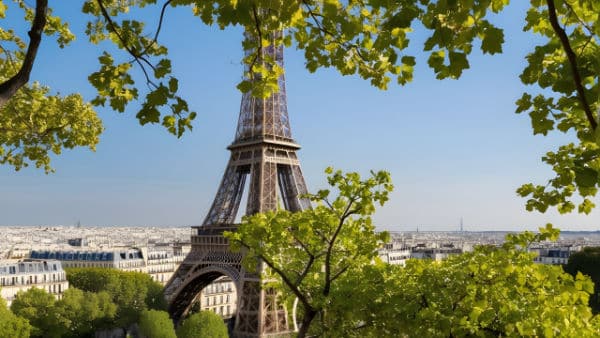
d) Balance Tourist Spots with Off-the-Beaten-Path Locations
While famous landmarks are great, also explore quieter, lesser-known areas for unique and authentic scenes. Often some of the best painting scenes, which show tons of local character, are off the manicured tourist pathways. Try and avoid very high traffic spots as the constant bustle of people obstructing your view can become quite frustrating.
e) Stay Flexible with Your Subjects
Be open to changing your subject if something more interesting catches your eye. You may see a person on a donkey walking past or a unique plant in a brightly colored pot which will make an awesome painting. Spontaneity can lead to the best artistic discoveries.
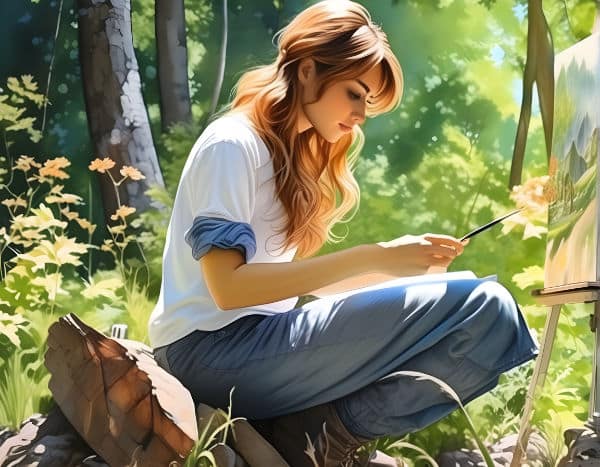
f) Prioritize Comfort in Your Painting Spot
Choose a spot that’s not only visually appealing but also comfortable to work in for an extended period. Sometimes even just a wall to lean against or a railing to rest your sketchbook on can help a lot.
g) Practice Mindful Observation
Take time to really see your surroundings before you start painting. Absorbing the details, atmosphere, and light can deeply influence your work. I usually try and find a subject that has good contrasts to work with.
h) Utilize Early Morning and Late Afternoon Light
These ‘golden hours’ offer soft, dramatic lighting that can add a magical quality to your paintings. This isn’t always possible so…
i) Learn to Paint in Varied Lighting Conditions
Challenge yourself to paint in different lighting, from the harsh midday sun to overcast days, to enhance your skills in capturing various moods and effects. If you are on an arranged tour then choosing the best time of day isn’t always possible. This is when your Artists License comes in handy to invent or extend shadow and play up contrasts to get a better effect in your painting.
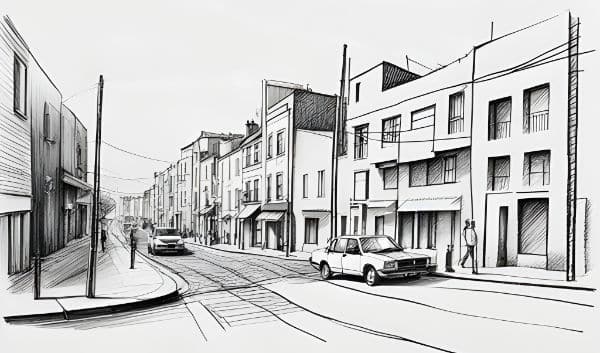
j) Sketch First, Paint Later
Begin with a quick sketch to lay down the composition and major elements. What you are looking to lay down on the paper is the essence of the scene. From there you can stop at any point if you need to. After that you are merely adding detail to the scene.
k) Be Mindful of Light and Shadow
Start by capturing the shadows since they change with the moving sun. They also set the mood and structure of your scene.
l) Immediately Take a Photo for Reference
If the light changes, having a photo can be invaluable. It lets you reference the initial light and shadow you wanted to capture at any time.
m) Capture the Moment, Not Perfection
Focus on the feeling and atmosphere of the scene rather than trying to create a perfect replica. It’s about the expression, not precision. Leave the highly detailed painting for when you get back home and time is on your side.
n) Work Quickly
Especially in changing conditions, working quickly with expressive strokes helps capture the essence of the moment. Surprisingly quick strokes can often convey more movement and life than painstaking detail.
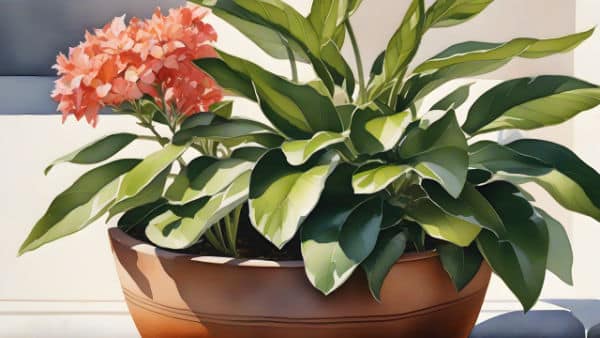
o) Use Limited Palettes for Cohesion
A limited color palette can bring harmony to your work and is easier to manage outdoors. It can also challenge you to be more creative with color mixing.
p) Embrace Mistakes as Part of the Journey
Every mistake is a learning opportunity. They add character to your work and reflect the spontaneity of outdoor painting. Mistakes are not errors, but learning opportunities!
q) Set Artistic Challenges for Yourself
Regularly challenge yourself with new goals, like using a limited color palette or completing a painting within a certain time frame, to keep your skills sharp, your approach fresh and your techniques improving.
r) Incorporate Textures and Elements from Nature
Experiment with incorporating natural elements like sand or leaves into your work, or use them for texture and pattern inspiration, adding a unique touch to your paintings. If you are however flying internationally then be aware that natural element may need to be declared at customs.
s) Use Your Camera as a Tool
Your camera is a powerful ally. Snap photos of your subject from different angles and in various lighting for reference. This will help you later for completing or revisiting your artwork as well as for creating larger detailed painting when back home.
t) Make Color Swatches for Color Reference
A camera doesn’t always capture the color correctly. Create swatches of the scenes you paint. They are invaluable for maintaining color consistency and can be a great reference for future artworks.
u) Protect Your Finished Works
Use portfolio sleeves, carrying cases, or even wax paper to protect your finished pieces from smudging or damage while transporting them back home.
By integrating these practices into your en plein air paintings, you’ll enhance your ability to capture the essence of your travels in your artwork, ensuring each piece not only survives the journey home but also holds true to the memory and experience of its creation.

3) Making the Most of the Environment
When you’re out in the world with your sketchbook or easel, remember that your presence as an artist is often a point of fascination for those around you. Embracing the audience that gathers as you work isn’t just about enjoying their curiosity; it’s an opportunity to connect. These impromptu viewers can offer unexpected insights or local stories that might just spark a new idea in your artwork. Don’t be shy, you soon get used to it and often leads to a sold painting.
Interacting with locals goes beyond mere conversations; it’s about immersing yourself in the heart of the place. Whether it’s a tip about a picturesque spot off the beaten path or insights into the local culture, these exchanges can deeply enrich your artistic perspective. And while you’re absorbing the local vibes, don’t miss out on the art scene around you. Visiting local galleries and exhibitions, you get to see through the eyes of local artists, gaining new inspiration and understanding different artistic expressions.
Sometimes, the best way to truly get into the artistic spirit of a place is by joining in. Participating in a local art class or group can be incredibly rewarding. It’s not just about learning new techniques; it’s about being part of a community, however briefly. often a local artist may be offering painting expeditions which you can book. These are so much fun and you always learn a lot.
When looking for a place to paint and while working it’s crucial to maintain a respectful and sensitive approach. Be it the natural environment or by following cultural norms, your role as an artist includes being a responsible and observant visitor. Sometimes items are sacred, etc. and locals may not allow or want you to paint them. If in doubt ask. This respect can often open more doors and create a deeper connection with the place and its people.
Networking with fellow traveling artists can be both inspiring and practical. Sharing experiences, tips, or even just stories over a cup of coffee can lead to friendships and valuable artistic exchanges.
Don’t hesitate to experiment with local artistic materials and techniques. It’s a fantastic way to integrate a piece of your travels into your art, making each piece a unique memento of your journey.
Lastly, if you’re traveling with family or friends, remember to strike a balance between your passion for painting and enjoying the trip together. It’s important to take time off from your art to explore and create memories with them too. After all, the stories you create together are just as inspiring as the landscapes you paint.
In the end, making the most of your environment while traveling and painting is about embracing the experience – the sights, the sounds, the people, and even the unexpected moments.
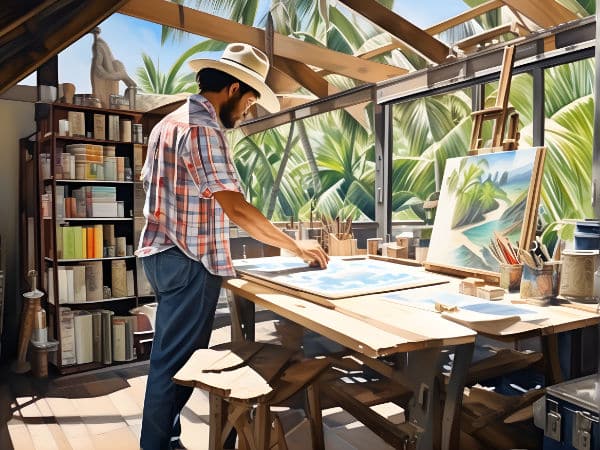
4) Setting Yourself Up for Future Paintings
Traveling as an artist is more than just capturing moments; it’s about sowing seeds for future artistic growth. Each sketch, photograph, and memory becomes a valuable resource for more complex and inspired artworks once you’re back in your studio.
Those in-between moments, like waiting at airports or train stations, are golden opportunities. Instead of scrolling through your phone, pull out your sketchbook. These moments can be surprisingly productive, offering a chance to capture fleeting scenes and expressions that might later become the centerpiece of a larger work.
Photography is another powerful tool in your artistic arsenal. It complements your sketches, providing details and perspectives that you might have missed or didn’t have time to capture. Later, these photos can be invaluable references, helping to jog your memory about specific colors, light, and atmosphere.
Once you’re back home, surrounded by the familiar comforts of your studio, take the time to reflect on and revise your travel works. Those quick outdoor sketches can evolve into more elaborate, refined pieces. Sometimes, a little distance from the actual scene can add a new dimension to your interpretation of it.
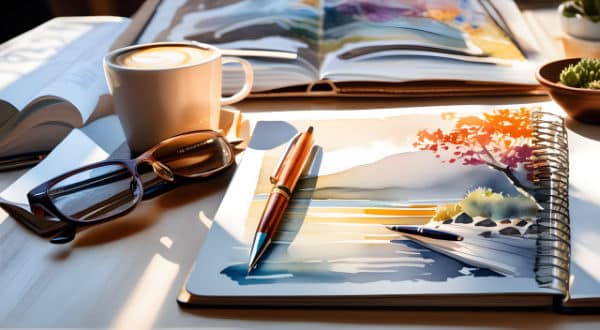
Keeping a travel journal is another enriching practice. Whilst visual cues are the most obvious way to preserve memories and inspiration from your travels, you could also try writing ideas down. Sometimes, taking notes of the things you experience when traveling can serve as inspiration for your paintings later on. By writing visual descriptions and recording your feelings during your travels, you can add another dimension to your collection of memories. Writing allows you to make a note of all your senses beyond just what you can see, you can also describe the smells, sounds, and tactile aspects of the experience.
When you’re home, these memories will help you to conjure up the feelings of the trip, giving your paintings more depth and emotion. If you distinctly remember the feeling of the sun on your skin or the damp of the rolling mist, you can try to weave these sensory experiences into your paintings. In doing so, you will lend your works more atmosphere beyond simply recreating what you saw.
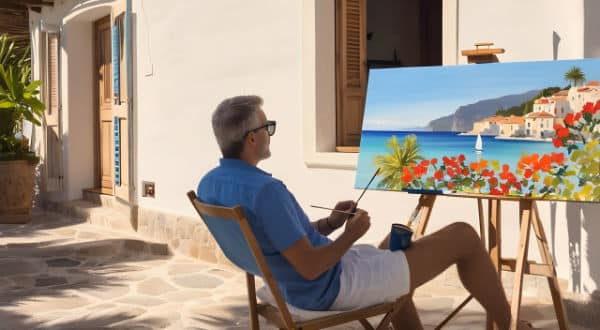
Conclusion
Remember that the essence of travel painting extends far beyond the canvas. It’s about the sights you witness, the people you meet, the experiences you embrace, and the memories you create. Each stroke of your brush captures not just a scene but a moment in time, a fragment of the world as seen through your eyes.
Carry these tips with you as you wander, but also don’t forget to make your own rules along the way. Art, after all, is as much about personal expression as it is about technique and skill. Let each new destination inspire and challenge you, adding depth and color to your artistic voice.
And when you’re back home, with a heart full of adventures and a sketchbook full of memories, let those experiences infuse your future artworks. Share your stories, both online and off, and let your art be a bridge that connects your inner world with the outer world.
In the words of Vincent van Gogh, “I am seeking, I am striving, I am in it with all my heart.” May your en plein air painting journey be one of seeking, striving, discovery, growth, and joy.
If you would like to learn more about sketchbooking you can read the Sketchbook Basics article follow the Freehand Sketching Course.
Pin Me
